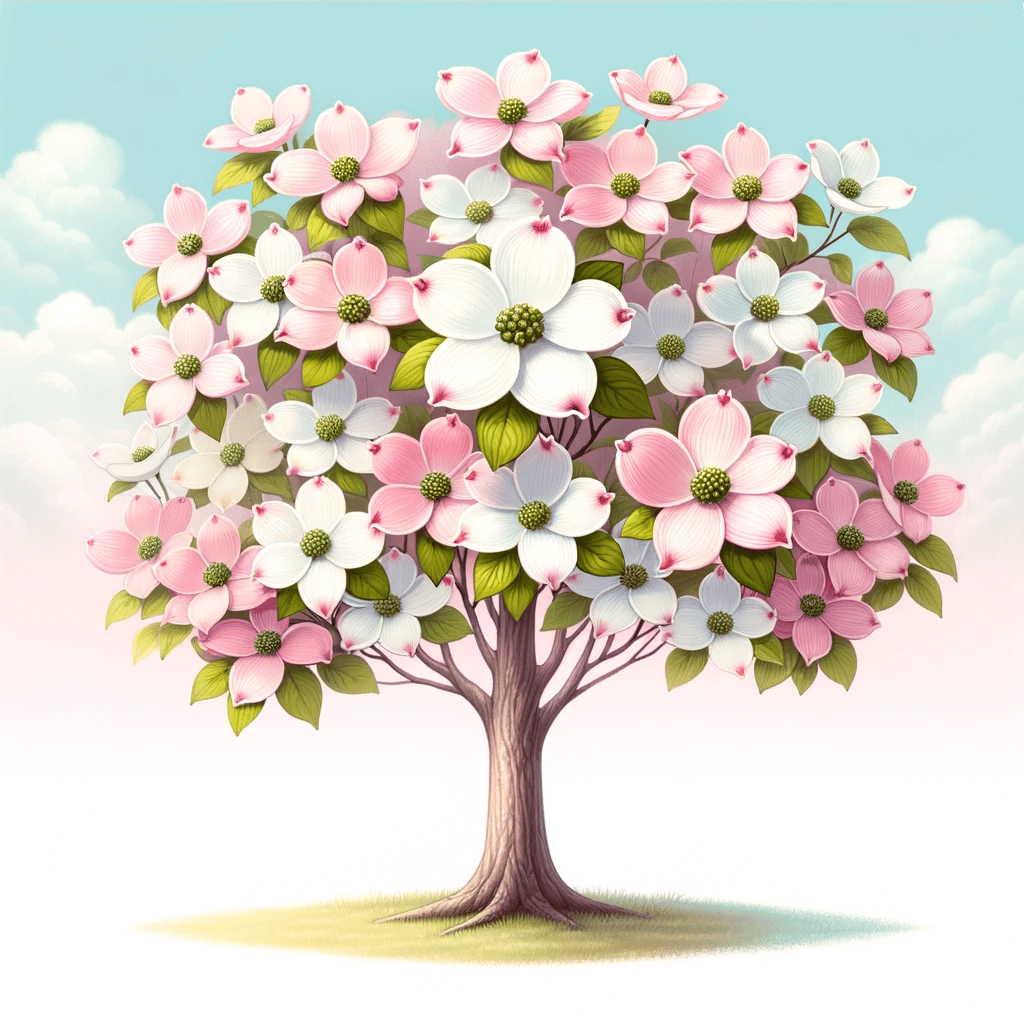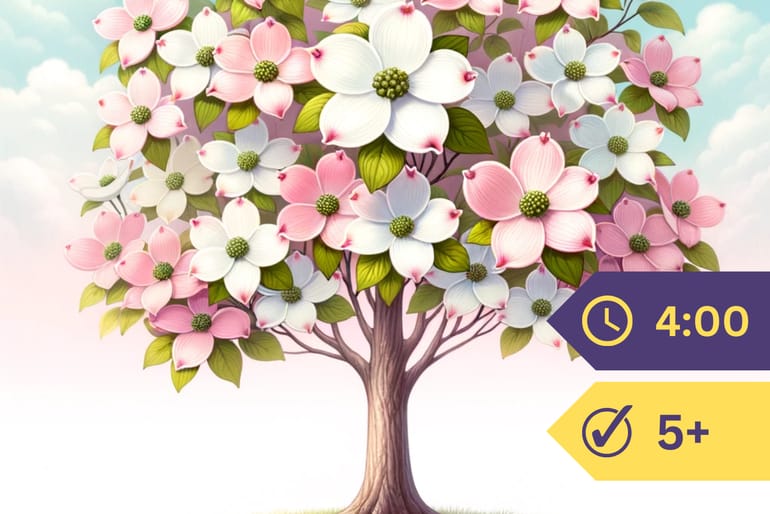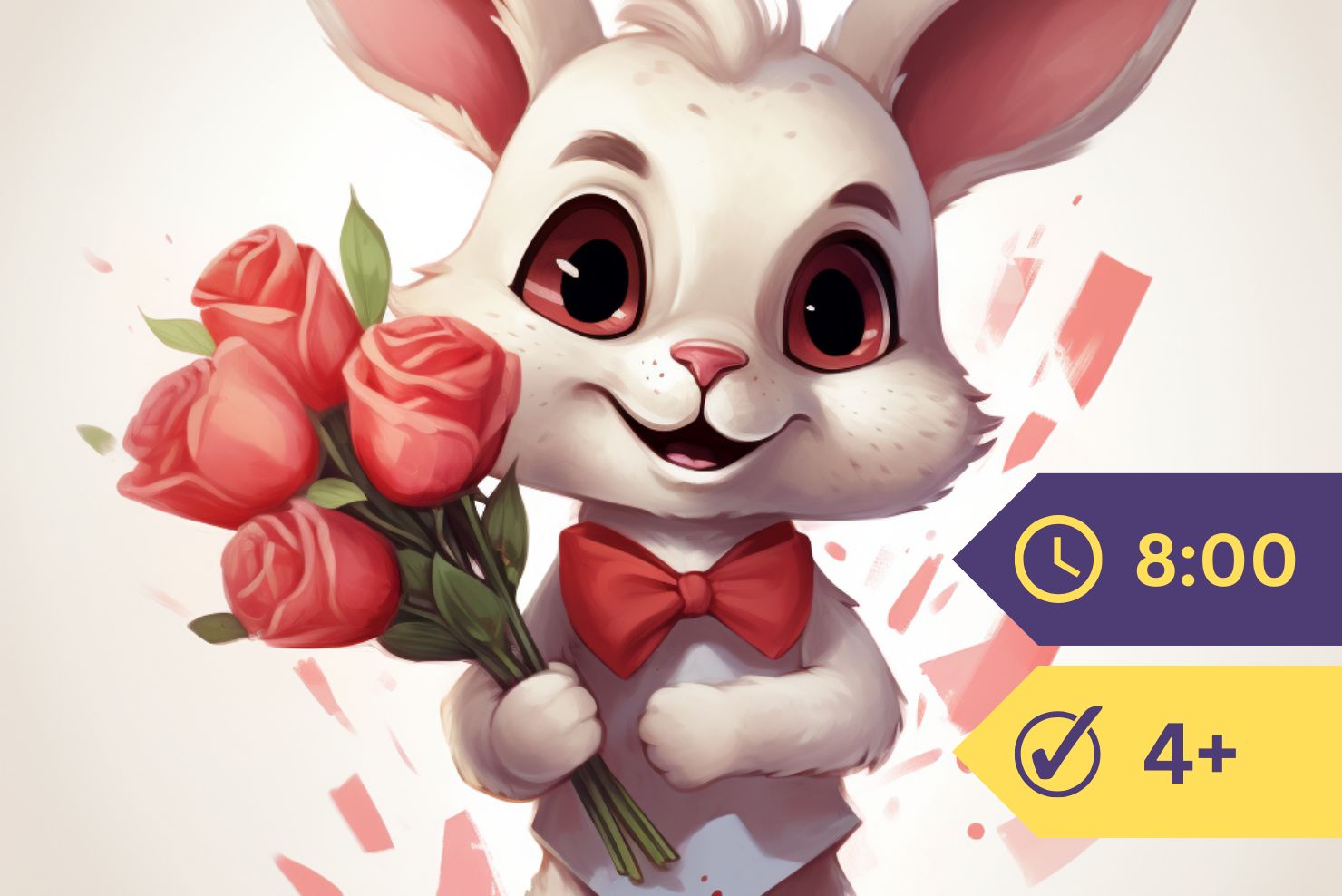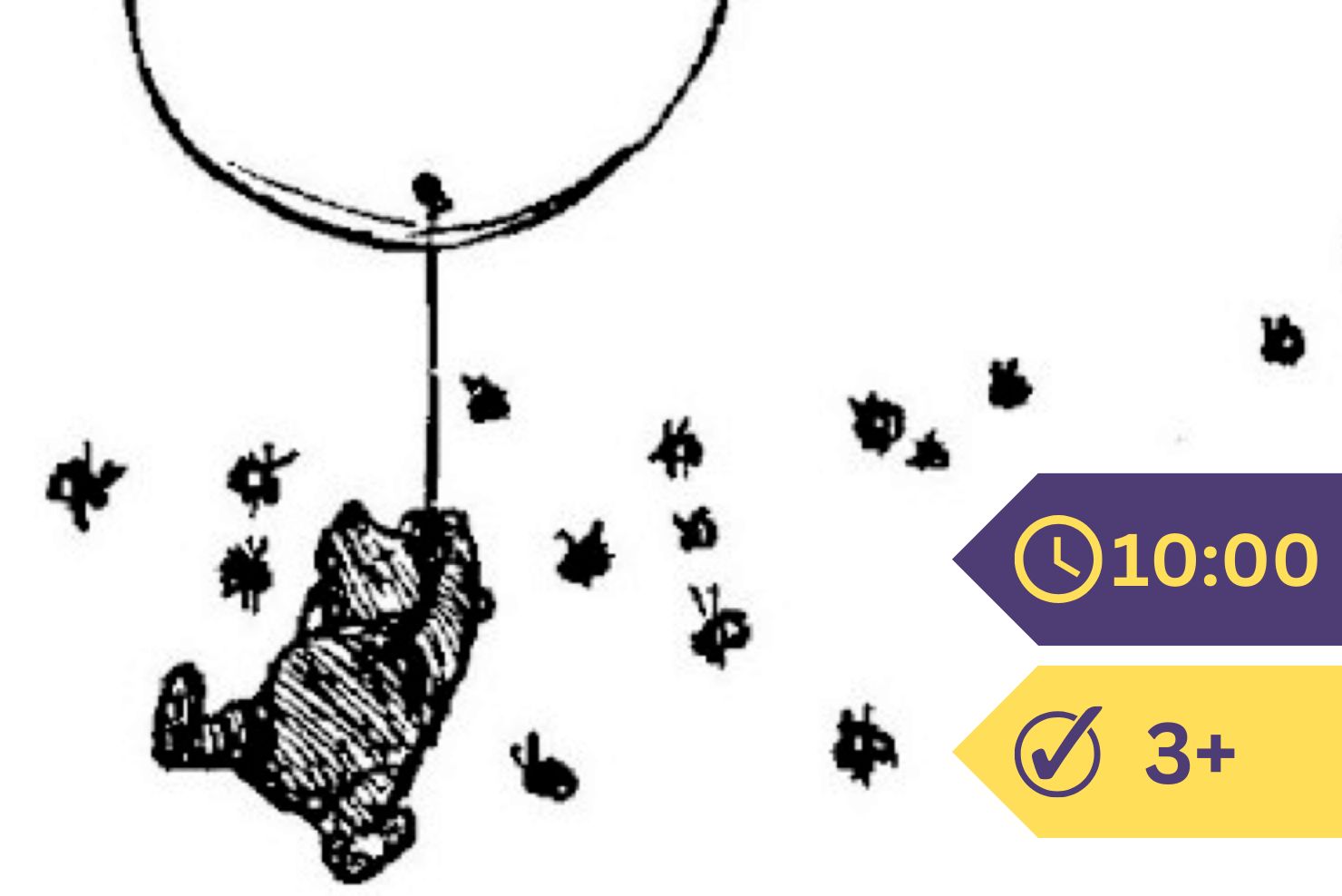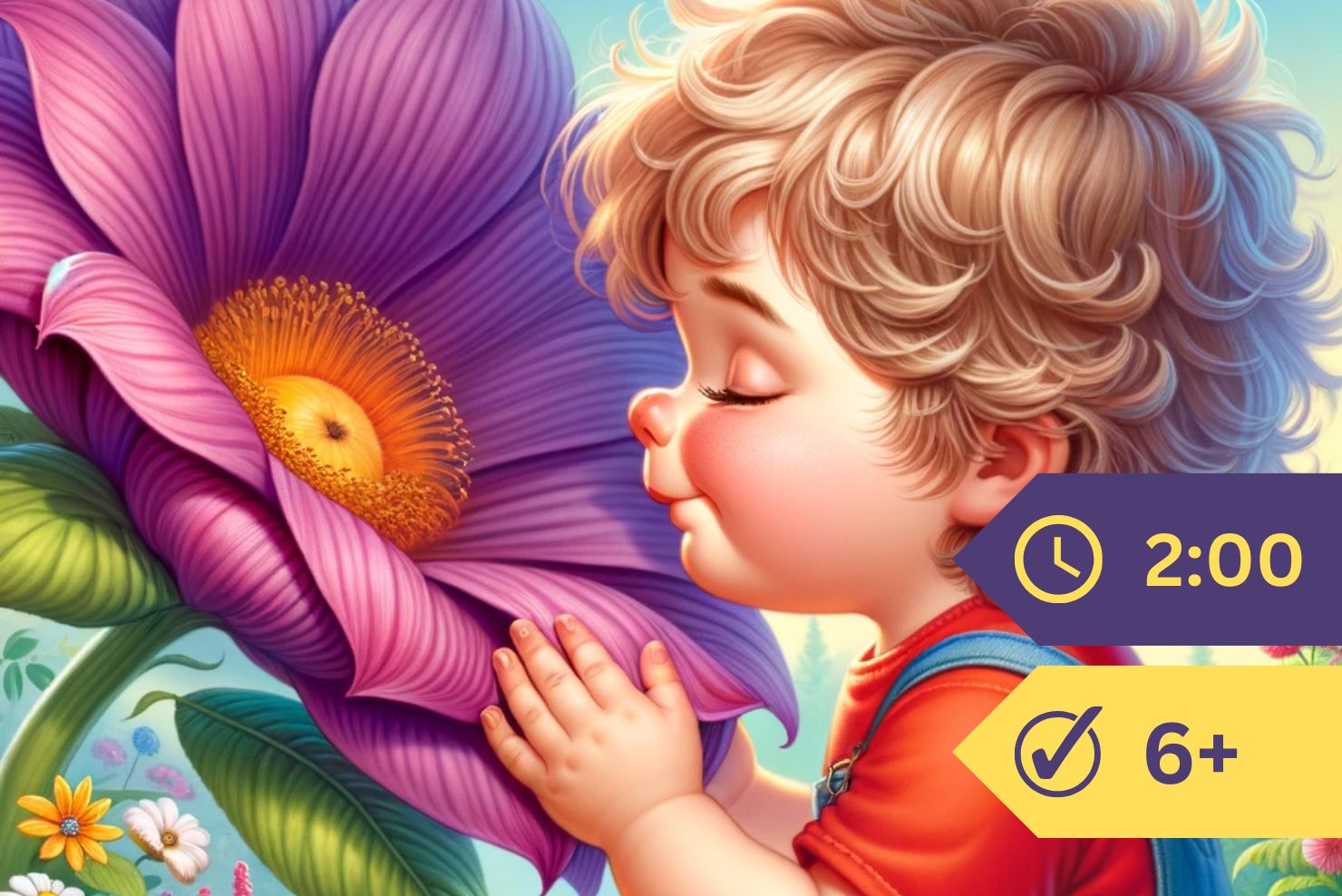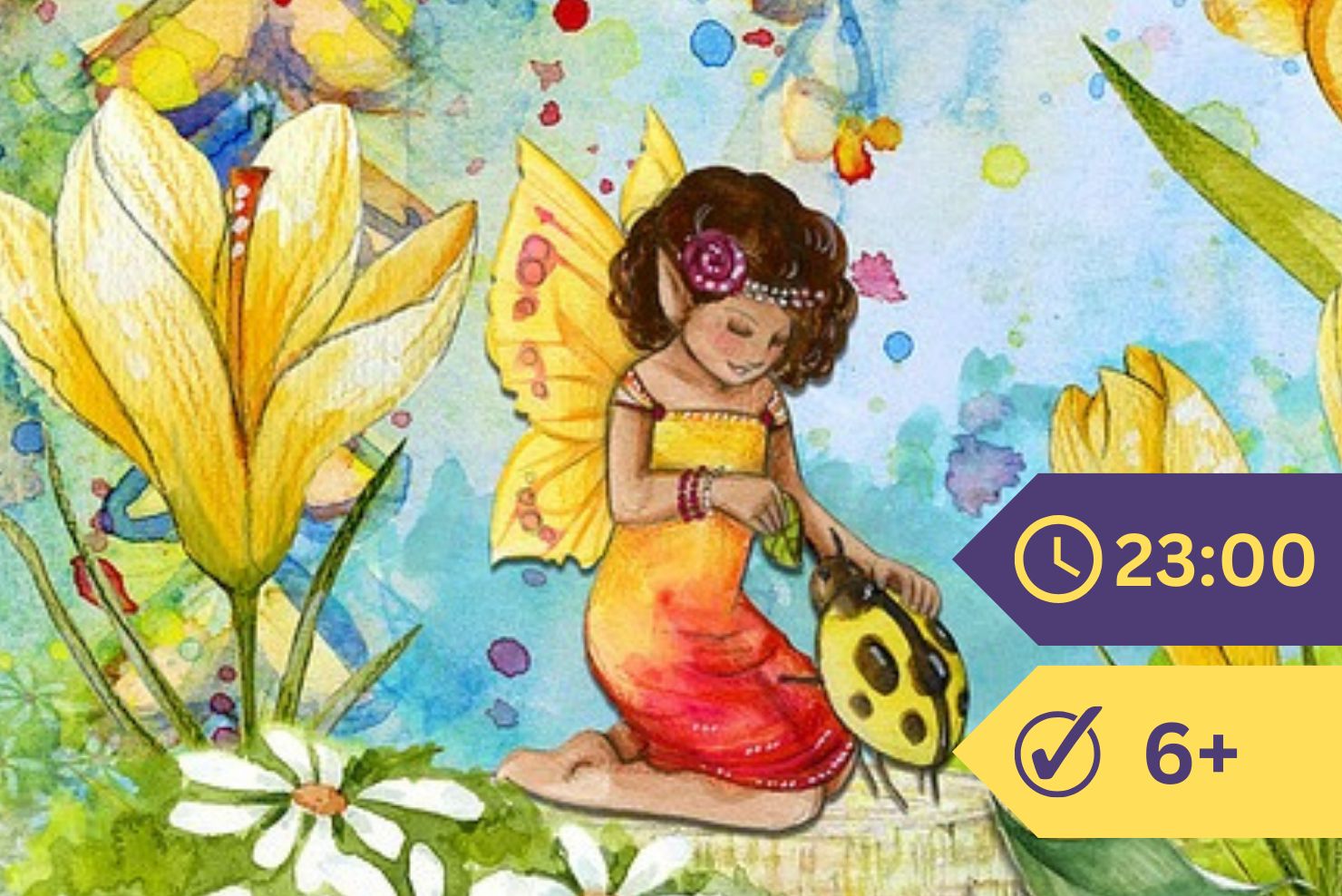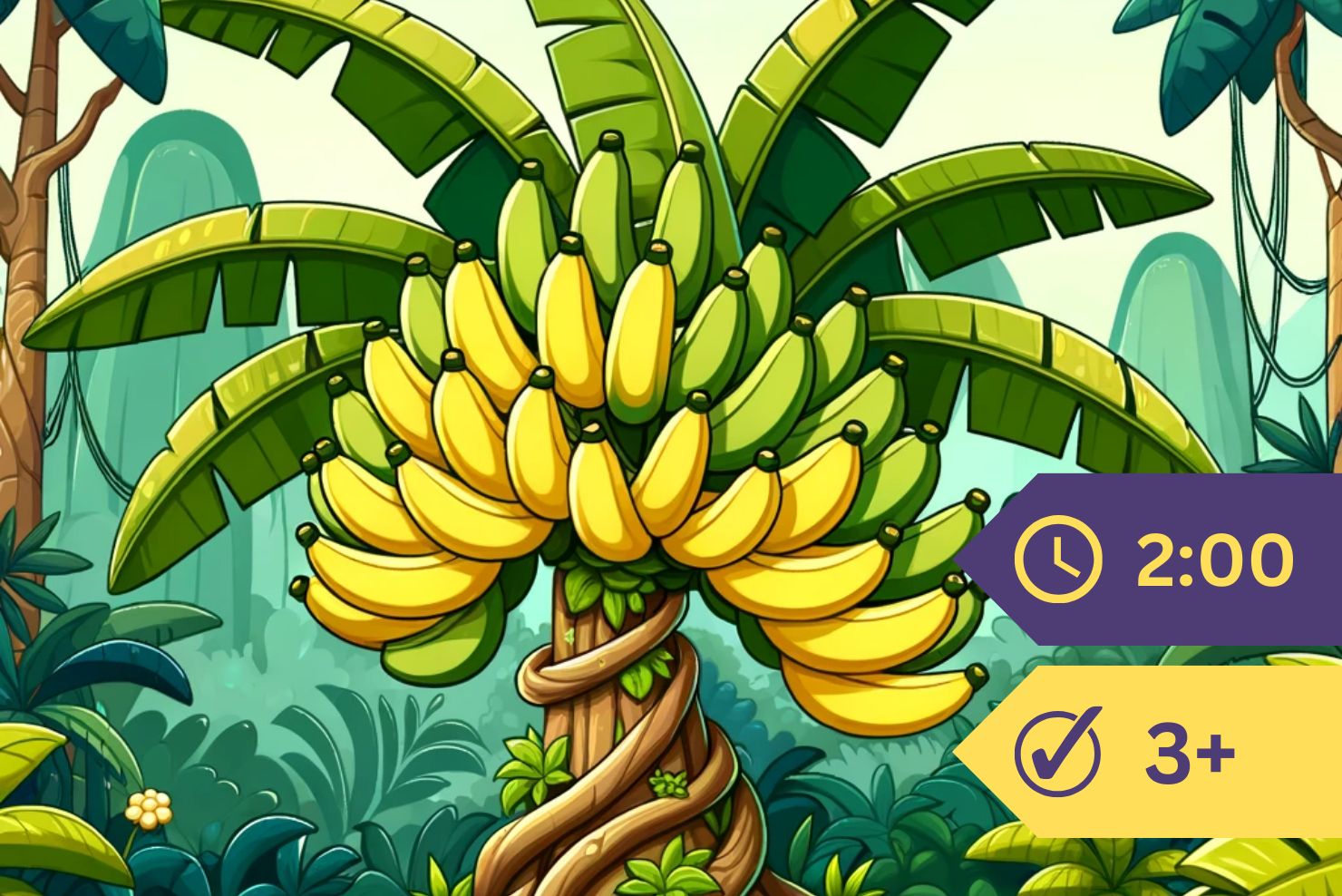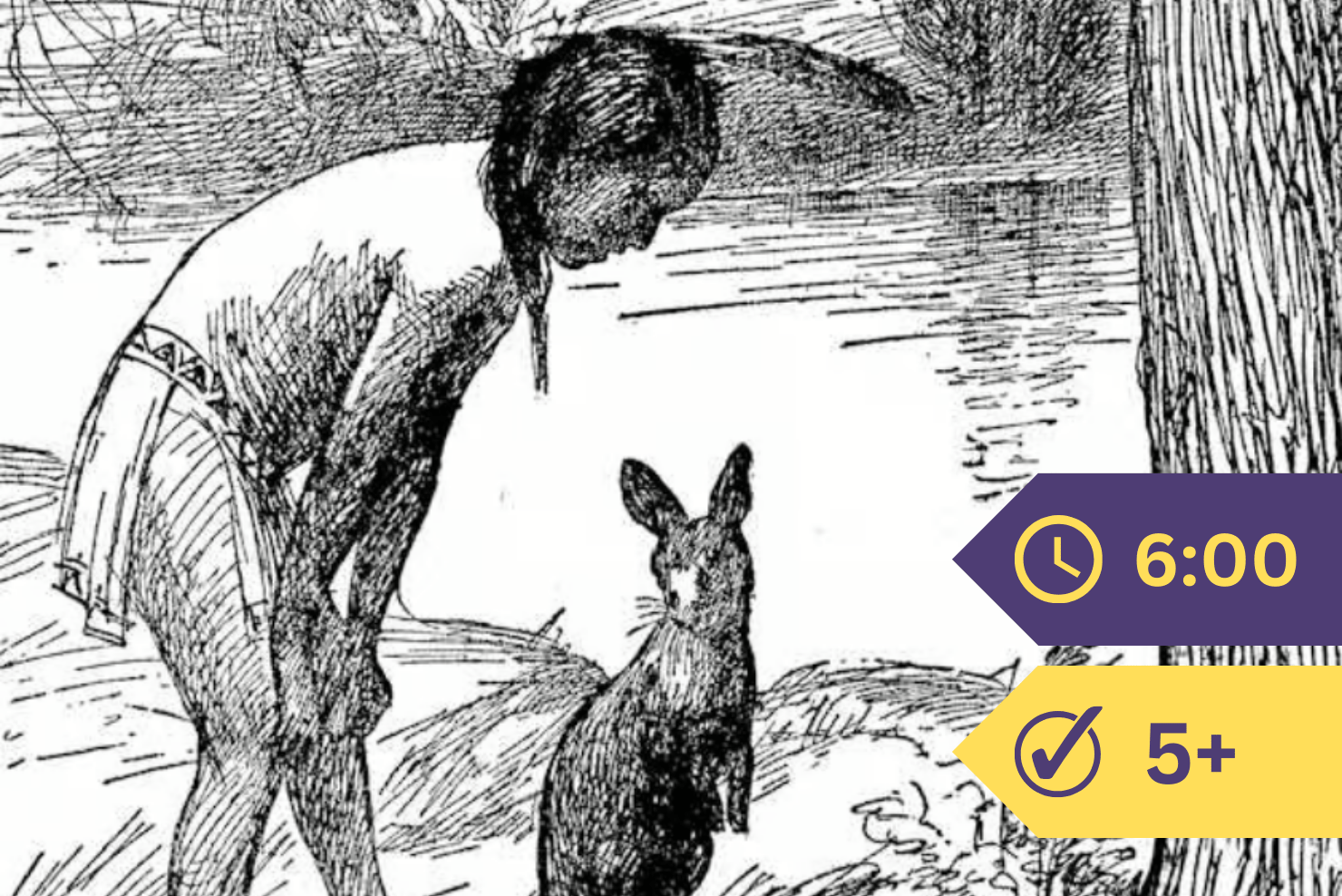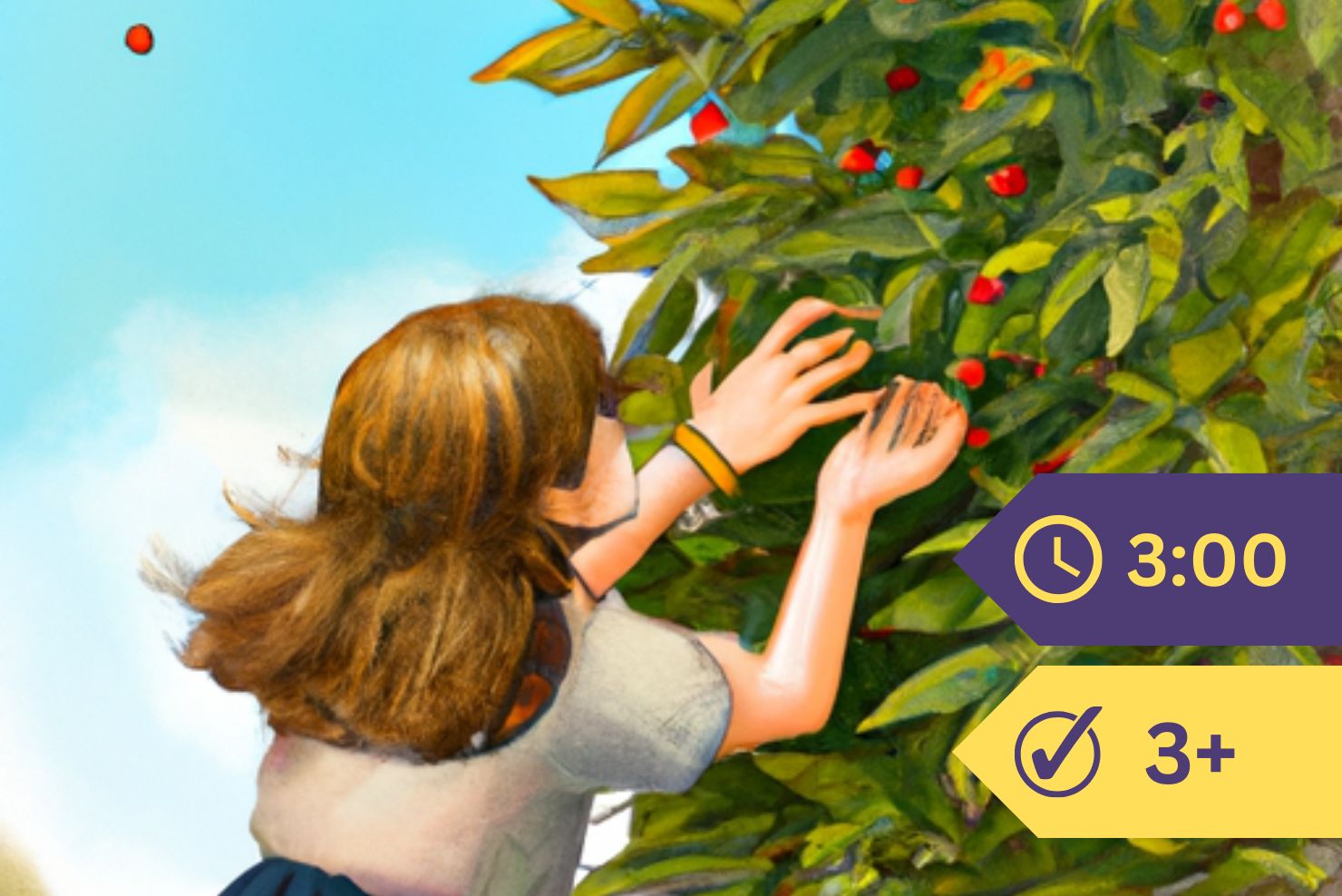Can you think of any other flowers that deceive us as the clover does?
Early in May we see in the woods a tree that is very beautiful. It is covered with what seem to be white blossoms. This tree is the flowering dogwood, and it tricks us somewhat in the same way as does the clover; for in this picture you see what nearly every one believes to be a single flower of the dogwood. And if some time ago you had been asked to give the building plan of the dogwood flower, you would have been pretty sure to say that the four large white leaves formed its corolla.

Here you would have been quite mistaken; for instead of one large flower, the picture shows you a number of tiny blossoms, so closely packed, and so surrounded by the four white leaves, that they look like only one blossom.
Try to get a branch from the dogwood tree (only be sure to break it off where it will not be missed), and pull apart what looks so much like one large flower.
First pull off the four white leaves. Then you will have left a bunch of tiny greenish blossoms. Look at one of these through a magnifying glass. If eyes and glass are both good, you will see a very small calyx, a corolla made up of four little flower leaves, four mites of stamens, and a tiny pistil,—a perfect little flower where you never would have guessed it.
But all by themselves they would never be noticed: so a number of them club together, surrounding themselves with the showy leaves which light up our spring woods.
In the picture below you see the flower cluster of the hobblebush.
The hobblebush has still another way of attracting attention to its blossoms. It surrounds a cluster of those flowers which have stamens and pistils, and so are ready to do their proper work in the world, with a few large blossoms which have neither stamens nor pistils, but which are made up chiefly of a showy white corolla. These striking blossoms serve to call attention to their smaller but more useful sisters.
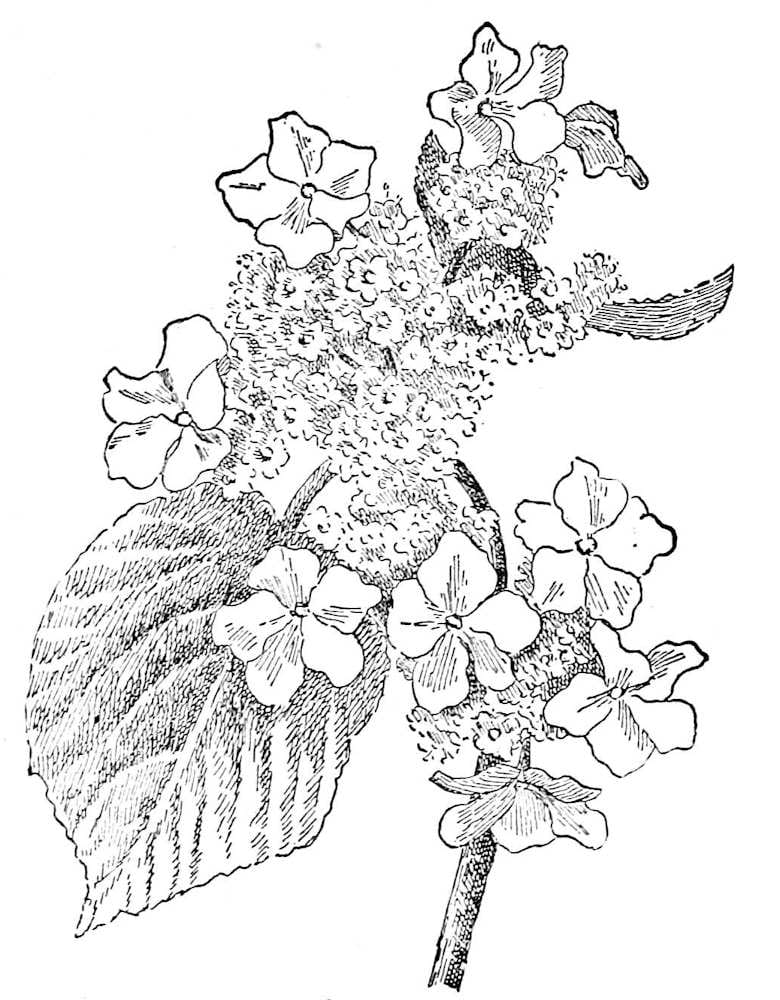
Sometimes a whole plant family will play this trick of putting a quantity of flowers in one bunch or cluster.
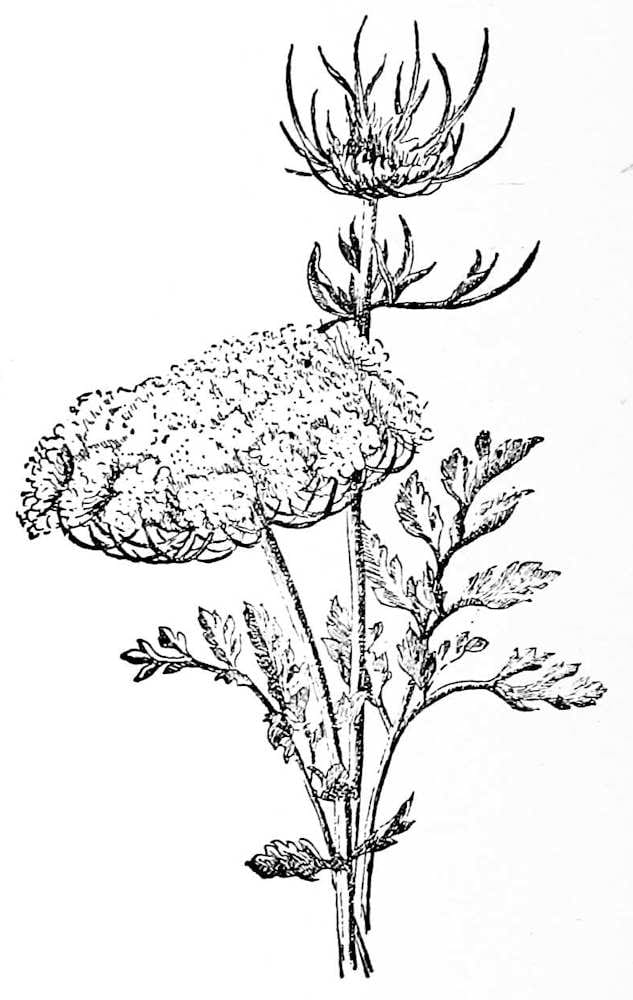
The wild carrot is one of our commonest wayside weeds, a torment to the farmer, but a beautiful plant nevertheless. Each one of its lace-like flower clusters is made up of many flowers,—flowers which are too small to live alone, and so have decided to keep house together.
You will notice that here, as with the hobblebush, the outer flowers are large and more showy than the inner ones. They seem to feel that with them rests the reputation of the family; that they must make the most of themselves, and do all in their power to attract the bees and butterflies.
The wild carrot belongs to the Parsley family. All the members of this family collect a great many little flowers into one fairly large cluster.
